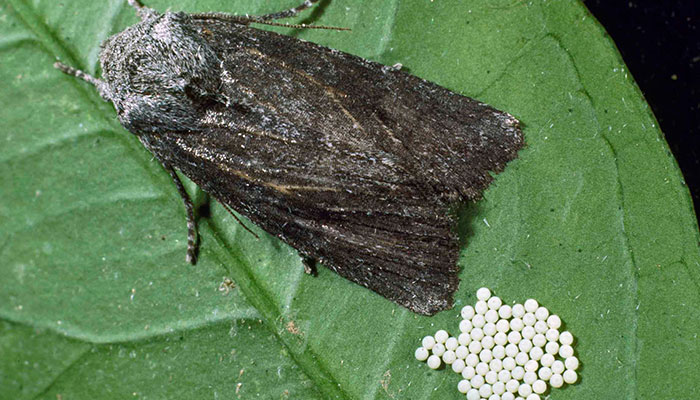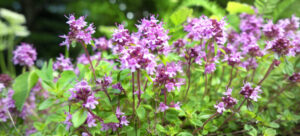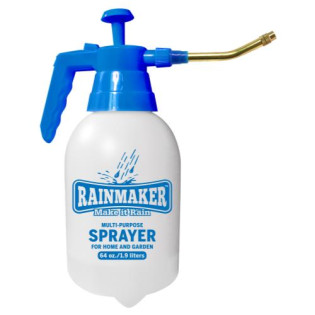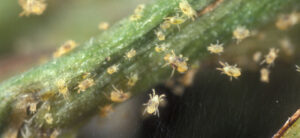
When it comes to learning how to get rid of cutworms in the garden, it seems as though everyone has their own idea of what will work well - and what will not.
Fortunately, we’re here to cut through all the nonsense and to provide you a clear guide for getting rid of cutworms on your plants that will work no matter what.
If you’ve ever dealt with these bugs, you know how devastating they can be. They have insatiable appetites, and can munch through your foliage without taking a break.
We're going to help you get back on track if you have an infestation at the time of reading this, sharing the right products and tips to kill cutworms quickly and safely.
First, though, we need to explain what these bugs are, what damage they can do to your plants, and how to identify & differentiate them from similar pests.
Then, we'll share some prevention tips, so you can optimize your growing space to cut down your chances of ever dealing with an outbreak in the first place!
What Are Cutworms?
It may surprise you to hear that cutworms aren’t actually their own pest species at all - but instead the larval form of several different types of nocturnal moths.
Cutworms are normally found on young seedlings, usually those of vegetable plants. They can be just about any color, including pink, grey, black, and green.
They are usually about two inches long but can be spotted, striped, or solid. When they aren’t on the move or munching your plants, they are usually curled up in the soil.
Cutworms generally feed only at night but during the day, they can sometimes be seen during periods of cloudy weather.
What Do Cutworms Turn Into?
Cutworms are often confused for grubs. But, they are technically a type of caterpillar, turning into nocturnal moths once they mature.

There are several kinds of cutworms, but one of the most common kinds is the black cutworm. It turns into the dark sword-grass moth.
Another type you might see is the variegated cutworm. Whatever type you're dealing with, they need to be eradicated from the garden. Here's why.
What Damage Can Cutworms Do In The Garden?
Though different species, these pests have one thing in common - how much damage they can do to a garden.

The larvae live under the soil along with weeds, high grass, and piles of debris. The eggs, which typically hatch in the fall, produce larvae that feed at night, munching on the first bit of plant they encounter.
Normally, this is the stem. When cutworms nibble on plant stems, it can completely sever the plant from its roots.
Chewing through plant stems at the base, cutworms also feed on the roots and foliage of young, vulnerable plants.
Usually, an entire plant will be destroyed. After all, this is where cutworms get their name - they feed by cutting down the entire plant from its base.
Sometimes it may not even be apparent to you that it’s a cutworm infestation that you are dealing with.
This is because cutworms sometimes do all of their destruction from underground, feeding on plants’ roots so that you don’t even realize there’s a problem until your plants shrivel up and die.
How To Prevent A Cutworms Infestation In The First Place
There are several steps you can take to prevent a cutworm infestation. Fortunately, none of these are incredibly labor-intensive, nor are they expensive.

Follow these steps and you may be able to not only prevent a cutworm infestation but you might also make your garden a healthier place for your plants.
Attract Beneficial Predators To Eat Cutworms
For example, you should attract birds to your garden by growing some of their favorite flowers and ornamental crops.
You can also put out a source of water, like a birdbath. The birds will eat the cutworms should they emerge.

You can also introduce other beneficial predators, like fireflies. While there are other kinds of animals and wildlife that eat cutworms, like skunks, it’s probably pretty unlikely that you’ll want to introduce these species to the garden!
By optimizing your garden to attract these natural predators, cutworms won't have a chance to populate - they'll be controlled organically by the presence of these other species!
Keep Your Garden Clean & Plant Strategically
Keep your garden weeded and clean. The moths will lay their eggs in tall grass and weeds.
At the end of the season, clean up garden debris and either now or till to expose cutworms and wreck their winter habitat.
Finally, consider delaying planting until later in the spring. Cutworms will be ready to eat as soon as conditions warm up in the spring.
If you can delay their gratification by a few weeks, they might not affect your seedlings.
How To Get Rid Of Cutworms In Your Garden Naturally

There are many natural solutions you can employ to get rid of cutworms in the garden without having to rely on insecticides or other chemicals.
One of the easiest is to put plant collars around your seedlings. Simply cut a four-inch piece of cardboard and wrap it around the stems of your plants.
This will prevent cutworms from reaching delicate stems when you’ve just transplanted. It doesn’t stop them from getting too plant roots, though it does dramatically reduce the overall risk of infestation.
Try Diatomaceous Earth
Diatomaceous earth is an incredibly effective natural pest control approach. It's a harsh powder will kill the cutworms as they crawl across it.
We have a complete guide on how to use diatomaceous earth if you are interested in learning more.
What Pesticide Kills Cutworms?
In some cases, these approaches we outlined above won't be enough to remedy a full blown cutworm infestation. In these cases, you'll need to use a pesticide to kill cutworms.

Some of the best active ingredients to use for cutworms include permethrin, carbaryl, and perhaps the most effective, bacillus thuringiensis. Here are some options you might consider for your infestation:
- Blacksmith BioScience Armory Beneficial Bacillus - root drench featuring bacillus thuringiensis among other beneficial bacteria. This is technically an additive that can boost plant growth and vigor too!
- Bonide Captain Jack's Deadbug Brew Concentrate - containing spinosad, this broad use pesticide is incredibly effective on soft bodied pests like caterpillars, moths, and cutworms.
- Safer Brand Caterpillar Killer Concentrate - OMRI certified and contains bacillus thuringiensis. Very effective at killing cutworms and caterpillars.
Again, consult with your local experts to find out the best time and methods for application. In any case, apply pesticides in the evening, when cutworms will come out to eat.
In most cases, pesticides can be applied to the leaves or stems of the plants. You may have to reapply several times in order to see any kind of impact.
Final Thoughts On How To Get Rid Of Cutworms In The Garden
Getting rid of cutworms in the garden isn’t as complicated as it might sound. These pests are relatively easy to control with some basic preventative measures and a bit of attention to how you are caring for your plants.
Remember, the earlier you detect these pests, the better your results will be when it comes to removing them from your garden for good.
Follow these tips and shop for all of your pest control and gardening supplies at Hydrobuilder. There’s no time to waste!




























